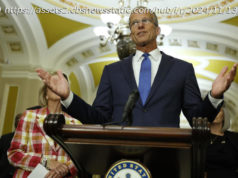The prime minister has won re-election on a tide of violence, fake news and resentment.
Before dawn on Feb. 26, Narendra Modi, the Hindu nationalist prime minister of India, ordered an aerial attack on the country’s nuclear-armed neighbor, Pakistan. There were thick clouds that morning over the border. But Mr. Modi claimed earlier this month, during his successful campaign for re-election, that he had overruled advisers who worried about them. He is ignorant of science, he admitted, but nevertheless trusted his “raw wisdom,” which told him that the cloud cover would prevent Pakistani radar from detecting Indian fighter jets.
Over five years of Mr. Modi’s rule, India has suffered variously from his raw wisdom, most gratuitously in November 2016, when his government abruptly withdrew nearly 90 percent of currency notes from circulation. From devastating the Indian economy to risking nuclear Armageddon in South Asia, Mr. Modi has confirmed that the leader of the world’s largest democracy is dangerously incompetent. During this spring’s campaign, he also clarified that he is an unreconstructed ethnic-religious supremacist, with fear and loathing as his main political means.
India under Mr. Modi’s rule has been marked by continuous explosions of violence in both virtual and real worlds. As pro-Modi television anchors hunted for “anti-nationals” and troll armies rampaged through social media, threatening women with rape, lynch mobs slaughtered Muslims and low-caste Hindus. Hindu supremacists have captured or infiltrated institutions from the military and the judiciary to the news media and universities, while dissenting scholars and journalists have found themselves exposed to the risk of assassination and arbitrary detention. Stridently advancing bogus claims that ancient Hindus invented genetic engineering and airplanes, Mr. Modi and his Hindu nationalist supporters seemed to plunge an entire country into a moronic inferno. Last month the Indian army’s official twitter account excitedly broadcast its discovery of the Yeti’s footprints.
Yet in the election that began last month, voters chose overwhelmingly to prolong this nightmare. The sources of Mr. Modi’s impregnable charisma seem more mysterious when you consider that he failed completely to realize his central promises of the 2014 election: jobs and national security. He presided over an enormous rise in unemployment and a spike in militancy in India-ruled Kashmir. His much-sensationalized punitive assault on Pakistan in February damaged nothing more than a few trees across the border, while killing seven Indian civilians in an instance of friendly fire.
Mr. Modi did indeed benefit electorally this time from his garishly advertised schemes to provide toilets, bank accounts, cheap loans, housing, electricity and cooking-gas cylinders to some of the poorest Indians. Lavish donations from India’s biggest companies allowed his party to outspend all others on its re-election campaign. A corporate-owned media fervently built up Mr. Modi as India’s savior, and opposition parties are right to suggest that the Election Commission, once one of India’s few unimpeachable bodies, was also shamelessly partisan.
None of these factors, however, can explain the spell Modi has cast on an overwhelmingly young Indian population. “Now and then,” Lionel Trilling once wrote, “it is possible to observe the moral life in process of revising itself.” Mr. Modi has created that process in India by drastically refashioning, with the help of technology, how many Indians see themselves and their world, and by infusing India’s public sphere with a riotously popular loathing of the country’s old urban elites.
Rived by caste as well as class divisions, and dominated in Bollywood as well as politics by dynasties, India is a grotesquely unequal society. Its constitution, and much political rhetoric, upholds the notion that all individuals are equal and possess the same right to education and job opportunities; but the everyday experience of most Indians testify to appalling violations of this principle.






